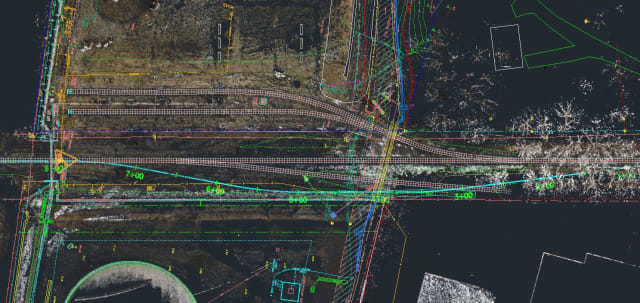Energy infrastructure is a cornerstone of any nation’s ability to provide adequate energy distribution to its citizens. But over time, improvements to infrastructure technologies develop, and new forms of energy emerge that require the old infrastructure to be updated. Today, the United States is realizing a boom in the production of domestic liquid propane gas (LPG), and facilities across the country are rapidly updating their storage and transportation infrastructure to meet the increased demand for LPG.

Building Information Modeling data overlaid on top of a 3D scan of the SEA-3 propane facility. With it, CHI Engineering is able to check existing conditions against the available survey data to ensure elements were not added, removed, or changed between survey dates. (Image courtesy of CHI Engineering.)
One facility that’s been undergoing dramatic changes is the SEA-3 LLC. propane facility located in Newington, N.H.
SEA-3 Then
For years the SEA-3 propane facility has been humming along, receiving, storing and shipping out LPG from its 60,000 barrel capacity terminal via rail, road and ocean to homes and businesses in the Northeastern US. However, after the facility was acquired by Blackline Midstream, ownership decided that it was necessary to expand the importing and storage, systems of the operation.
But that posed a problem.
How do you retrofit an LPG facility, loaded with flammable, pressurized materials, while also keeping it open for business? Chris…

